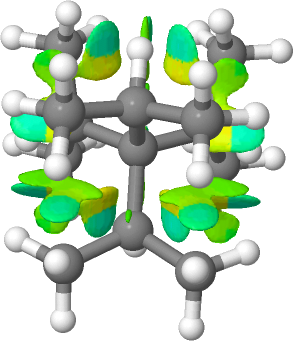The title comes from the abstract of an article[cite]10.1021/acs.jmedchem.1c00975[/cite] analysing why Biotin (vitamin B7) is such a strong and effective binder to proteins, with a free energy of (non-covalent) binding approaching 21 kcal/mol.
Messaggi di Rogue Scholar
Earlier this year, Molnupiravir hit the headlines as a promising antiviral drug. This is now followed by Paxlovid, which is the first small molecule to be aimed by design at the SAR-CoV-2 protein and which is reported as reducing greatly the risk of hospitalization or death when given within three days of symptoms appearing in high risk patients. The Wikipedia page (first created in 2021) will display a pretty good JSmol 3D model of this;

On October 13, 2021, the historical group of the Royal Society of Chemistry organised a symposium celebrating ~150 years of the history of (molecular) chirality. We met for the first time in person for more than 18 months and were treated to a splendid and diverse program about the subject. The first speaker was Professor John Steeds from Bristol, talking about the early history of light and the discovery of its polarisation.
An earlier post investigated large anomeric effects involving two oxygen atoms attached to a common carbon atom. A variation is to replace one oxygen by a nitrogen atom, as in N-C-O. Shown below is a scatter plot of the two distances to the common carbon atom derived from crystal structures. You can see some entries for which the C-O bond length is shorter than normal and the C-N distance very much longer than normal;

The homologous hydrocarbon series R 4 C is known for R=Me as neopentane and for R=Et as 3,3-diethylpentane. The next homologue, R=* i *Pr bis(3,3-isopropyl)-2,4-dimethylpentane is also a known molecule[cite]10.1002/1521-3773(20010105)40:1%3C180::AID-ANIE180%3E3.3.CO;2-B[/cite] for which a crystal structure has been reported (DOI: https://doi.org/10.5517/cc4wvnh). The final member of the series, R= t butyl is unknown.
Whilst I was discussing the future of scientific publication in the last post, a debate was happening behind the scenes regarding the small molecule cyclopropenylidene. This is the smallest known molecule displaying π-aromaticity, but its high reactivity means that it is unlikely to be isolated in the condensed phase.
Occasionally, someone comments about an old post here, asking a question. Such was the case here, when a question about the dipole moment of cyclopropenylidene arose. It turned out to be 3.5D, but this question sparked a thought about the related molecule below.

From the last few posts here, you might have noticed much discussion about how the element carbon might sustain a quadruple bond. The original post on this topic from some years ago showed the molecular orbitals of the species CN + , which included two bonding π-types and a low lying nodeless bonding σ-orbital, all with double occupancies and adding up to a triple bond.
I noted in an earlier post the hypothesized example of (CO) 3 Fe⩸C[cite]10.1039/d0cp03436c[/cite] as exhibiting a carbon to iron quadruple bond and which might have precedent in known five-coordinate metal complexes where one of the ligands is a “carbide” or C ligand. I had previously mooted that the Fe⩸C combination might be replaceable by an isoelectronic Mn⩸N pair which could contain a quadruple bond to the nitrogen.
The proposed identification of molecules with potential metal to carbon quadruple bonds, in which the metal exhibits trigonal bipyramidal coordination rather than the tetrahedral modes which have been proposed in the literature[cite]10.1039/d0cp03436c[/cite],[cite]10.1039/d1cp00598g[/cite],[cite]10.1021/acs.jpclett.9b03484[/cite] leads on to asking whether simple trigonal coordination at the metal can also sustain this theme?